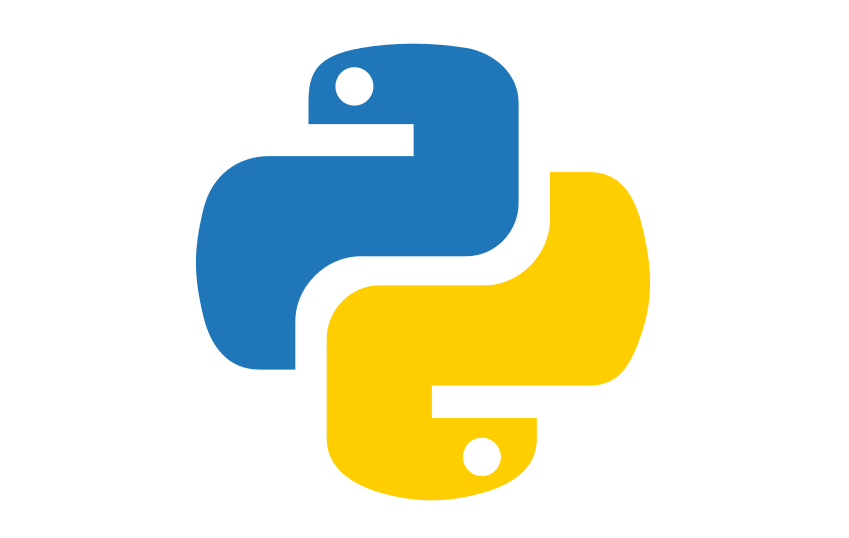Python, with its simplicity and versatility, has become one of the most popular programming languages across various domains. Its rich ecosystem of libraries empowers developers to build robust solutions efficiently. Among these libraries, some stand out for their exceptional capabilities and widespread adoption. Let’s dive into the top 10 Python libraries that every developer should be familiar with.
NumPy:
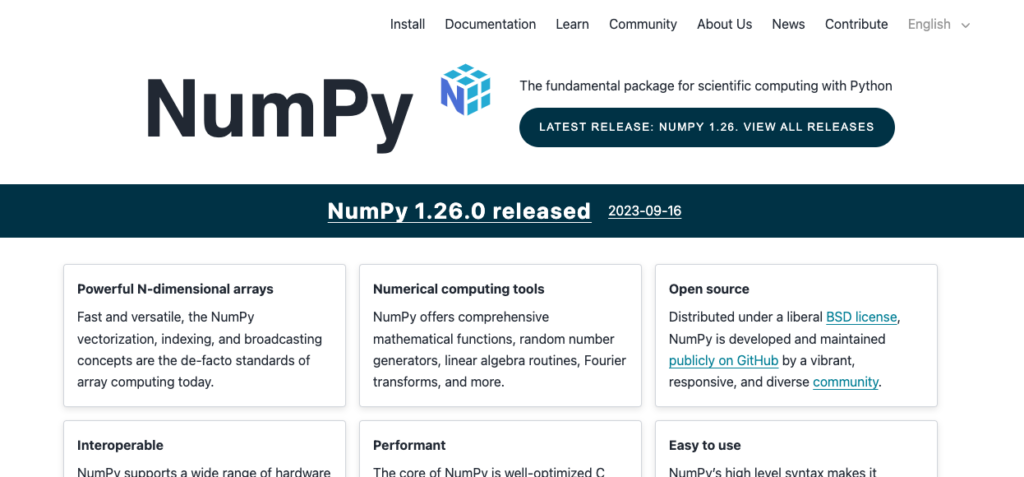
NumPy is the fundamental package for scientific computing with Python. It provides support for powerful numerical operations and multi-dimensional arrays, making it indispensable for tasks involving mathematical operations, linear algebra, and data manipulation.
- Powerful N-dimensional array objects: NumPy provides support for multidimensional arrays and matrices, along with a collection of mathematical functions to operate on these arrays efficiently.
- Broadcasting capabilities: NumPy’s broadcasting allows for arithmetic operations between arrays of different shapes, making it easier to perform element-wise operations without explicitly looping over the arrays.
Pandas:

Pandas is a powerful library for data manipulation and analysis. It offers expressive data structures, such as DataFrames, and functionalities for reading and writing data from various sources. Pandas is widely used in data science, finance, and research for data wrangling and analysis.
- DataFrame for tabular data manipulation: Pandas introduces the DataFrame data structure, which is highly flexible and efficient for data manipulation tasks like filtering, grouping, joining, and reshaping.
- Data input/output tools: Pandas provides functions to read and write data from various file formats, including CSV, Excel, SQL databases, and JSON, simplifying the process of importing and exporting data.
Matplotlib:
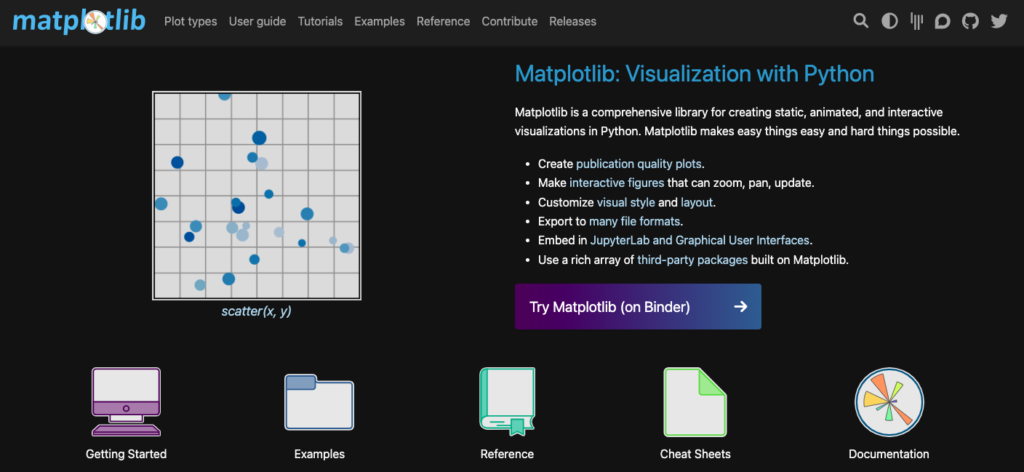
Matplotlib is a comprehensive library for creating static, animated, and interactive visualizations in Python. It provides a MATLAB-like interface and supports a wide range of plots and charts, making it suitable for scientific plotting, data exploration, and presentation.
- Versatile plotting functions: Matplotlib offers a wide range of plotting functions to create static, animated, and interactive visualizations, including line plots, scatter plots, histograms, bar charts, and 3D plots.
- Customization options: Matplotlib allows developers to customize every aspect of their plots, including colors, line styles, markers, labels, and annotations, ensuring that the visualizations meet their specific requirements.
TensorFlow:

TensorFlow is an open-source machine learning framework developed by Google. It enables developers to build and train deep learning models efficiently, with support for both high-level APIs and low-level operations. TensorFlow is widely used in various fields, including computer vision, natural language processing, and reinforcement learning.
- High-level APIs: TensorFlow provides high-level APIs like Keras for building and training deep learning models with minimal boilerplate code, enabling rapid prototyping and experimentation.
- TensorFlow Lite for mobile and embedded devices: TensorFlow Lite allows developers to deploy machine learning models on mobile and embedded devices with optimized performance and reduced memory footprint, opening up new opportunities for edge computing applications.
Scikit-learn:
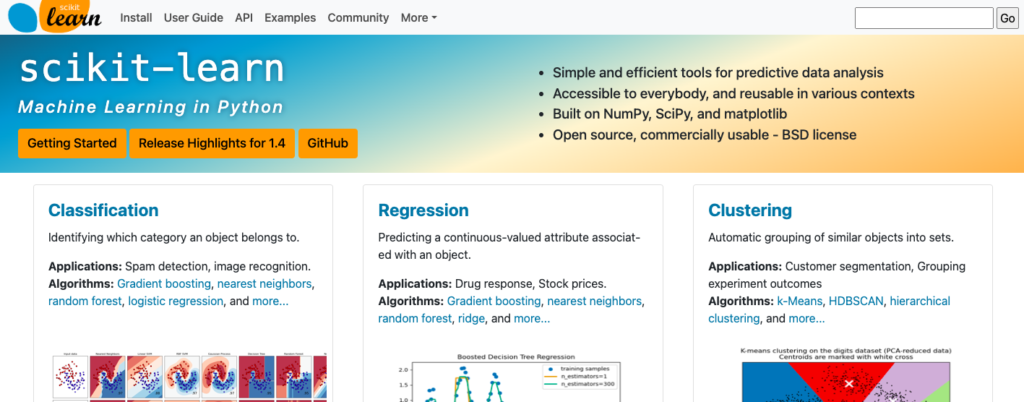
Scikit-learn is a versatile machine learning library that provides simple and efficient tools for data mining and analysis. It offers a wide range of algorithms for classification, regression, clustering, and dimensionality reduction, along with utilities for model selection and evaluation.
- Simple and consistent API: Scikit-learn follows a uniform API design across different machine learning algorithms, making it easy for developers to switch between algorithms and experiment with different models.
- Model evaluation and selection tools: Scikit-learn provides utilities for evaluating model performance using cross-validation, hyperparameter tuning, and model selection techniques like grid search and randomized search.
PyTorch:
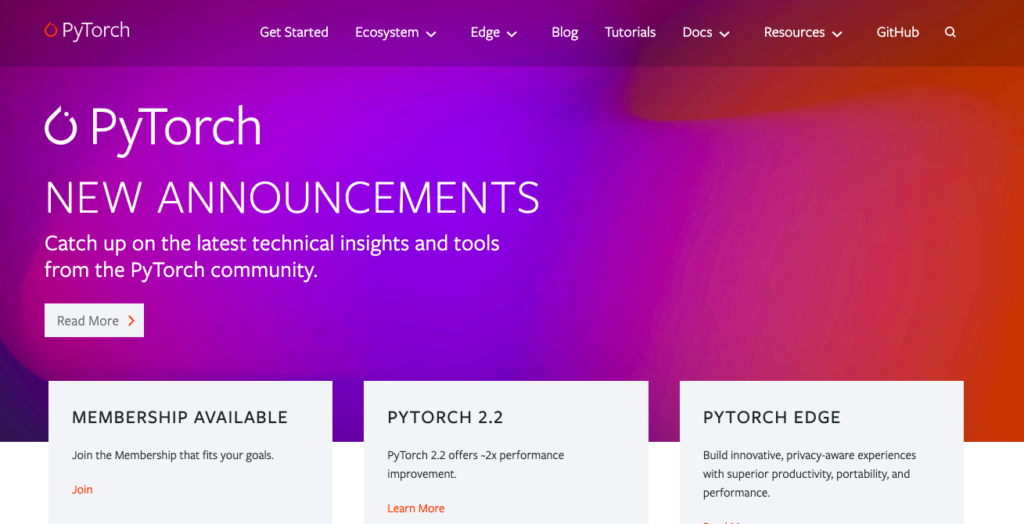
PyTorch is a deep learning framework developed by Facebook’s AI research lab. It provides a dynamic computational graph and seamless GPU acceleration, making it suitable for research prototyping and production deployment. PyTorch is widely used in academia and industry for developing state-of-the-art deep learning models.
- Dynamic computational graph: PyTorch’s dynamic computational graph allows for dynamic graph creation and modification during runtime, facilitating advanced techniques like dynamic neural networks and recursive neural networks.
- Seamless GPU acceleration: PyTorch provides seamless GPU acceleration using CUDA, allowing developers to leverage the computational power of GPUs for training deep learning models efficiently.
Django:
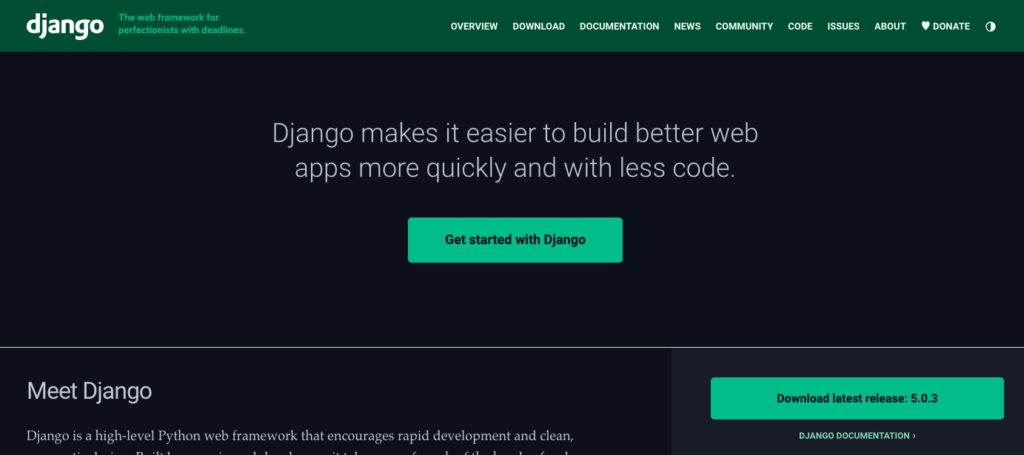
Django is a high-level web framework for building robust and scalable web applications in Python. It follows the “batteries-included” philosophy, providing built-in features for authentication, URL routing, templating, and database management. Django’s pragmatic design and extensive documentation make it a popular choice for web development.
- Built-in admin interface: Django comes with a built-in admin interface that allows developers to manage application data, users, and permissions without writing custom code, making it easy to develop and maintain administrative tasks.
- ORM for database interaction: Django’s object-relational mapping (ORM) simplifies database interaction by abstracting SQL queries into Python objects, enabling developers to work with databases using Python syntax.
Flask:
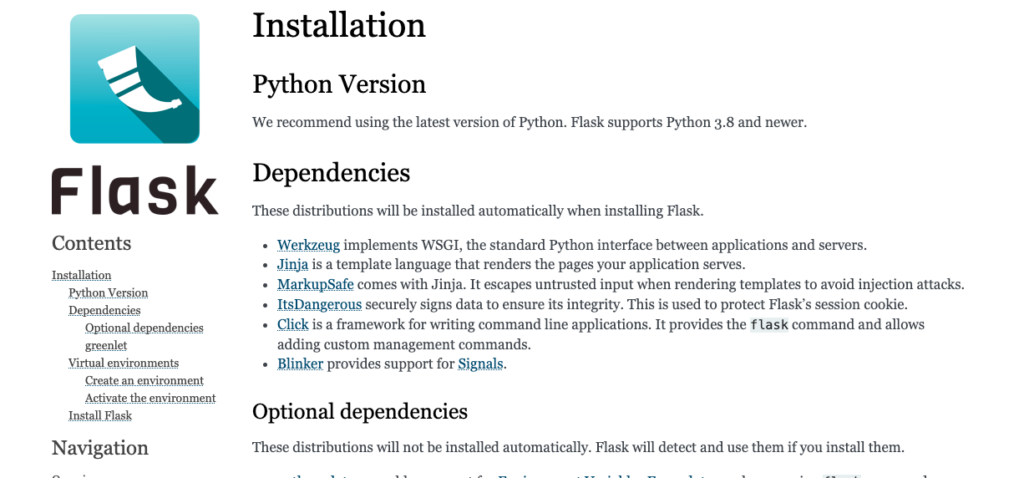
Flask is a lightweight and flexible web framework for building web applications and APIs in Python. It is designed to be simple and easy to use, with minimal dependencies and a modular architecture. Flask is well-suited for small to medium-sized projects and rapid prototyping.
- Lightweight and minimalist framework: Flask is designed to be lightweight and minimalist, with minimal dependencies and a simple API, making it easy to get started with web development and build scalable applications.
- Extensible through Flask extensions: Flask provides a rich ecosystem of extensions for adding functionality like authentication, database integration, caching, and RESTful APIs, allowing developers to customize and extend Flask according to their requirements.
Requests:

Requests is a simple yet powerful HTTP library for making HTTP requests in Python. It provides an elegant and user-friendly API for sending HTTP requests, handling responses, and managing sessions. Requests is widely used for web scraping, API integration, and automated testing.
- Simple and intuitive API: Requests provides a simple and intuitive API for making HTTP requests, with support for various HTTP methods, headers, cookies, and authentication mechanisms, making it easy to work with web APIs.
- Session management: Requests allows developers to persist parameters across multiple requests using sessions, enabling features like cookies handling, connection pooling, and authentication persistence.
Beautiful Soup:
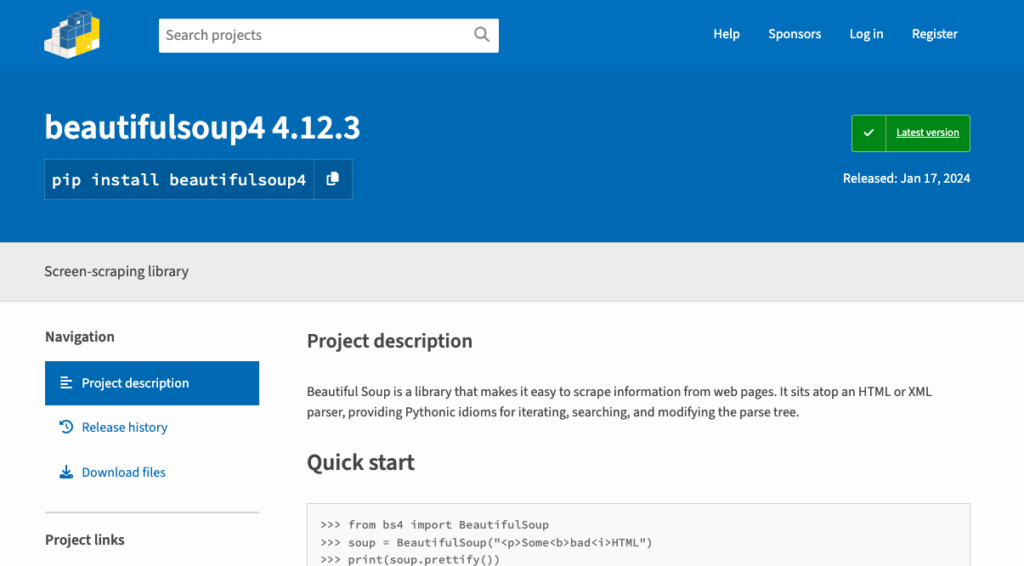
Beautiful Soup is a Python library for parsing HTML and XML documents, extracting data, and navigating the parse tree. It provides a convenient interface for web scraping and data extraction tasks, with support for various parsers and robust error handling.
- Powerful parsing capabilities: Beautiful Soup provides robust HTML and XML parsing capabilities, allowing developers to navigate the parse tree, search for specific elements, extract data, and manipulate the document structure easily.
- Built-in parsers: Beautiful Soup supports various parsers, including Python’s built-in HTML parser, lxml, and html5lib, ensuring compatibility with different markup languages and parsing requirements.
Python’s rich ecosystem of libraries empowers developers to tackle a wide range of tasks efficiently. Whether you’re working on data analysis, machine learning, web development, or automation, these 10 libraries are essential tools that can enhance your productivity and enable you to build powerful solutions with ease. Keep exploring and experimenting with these libraries to unlock their full potential and stay ahead in the ever-evolving world of technology.


